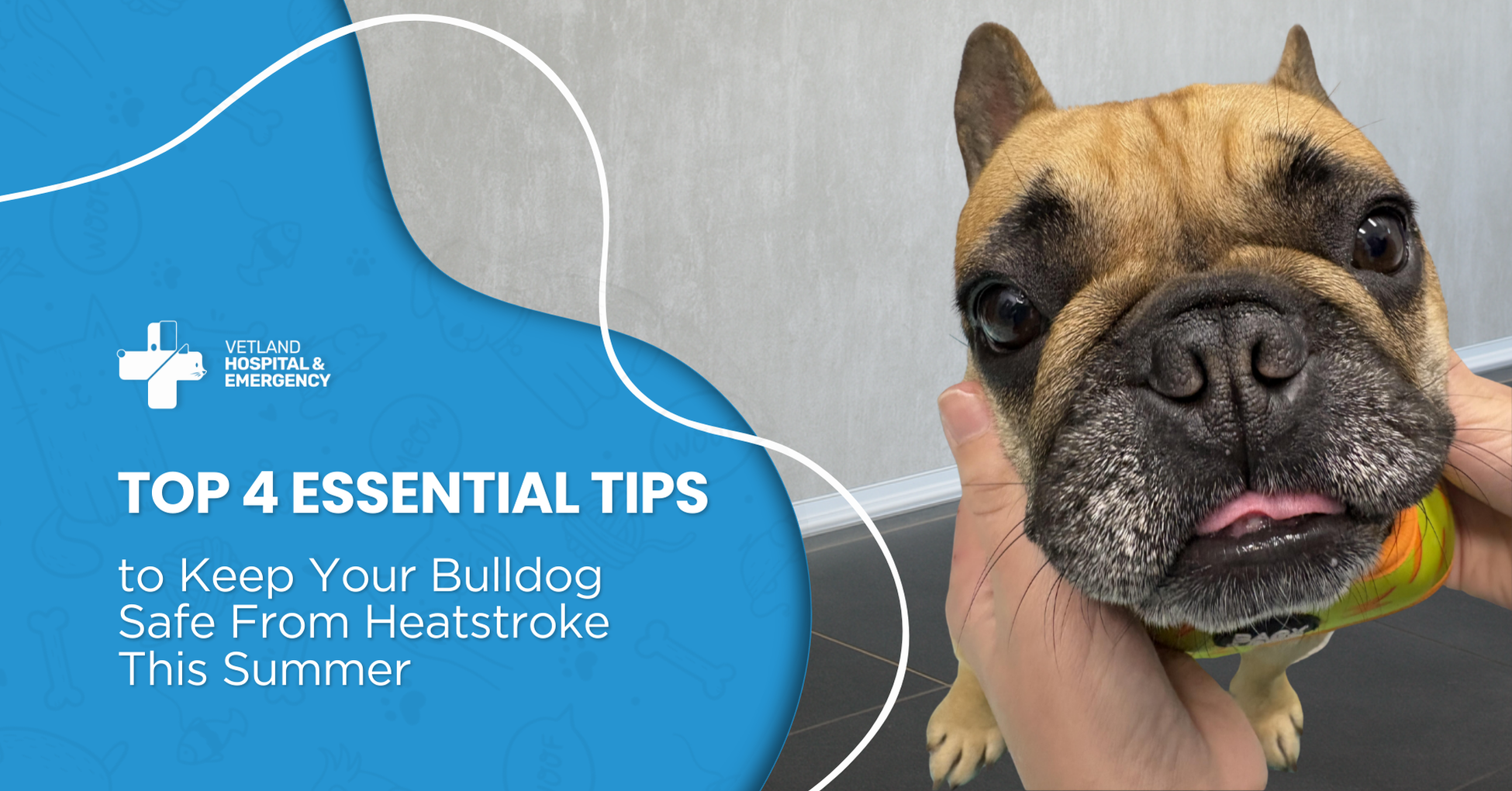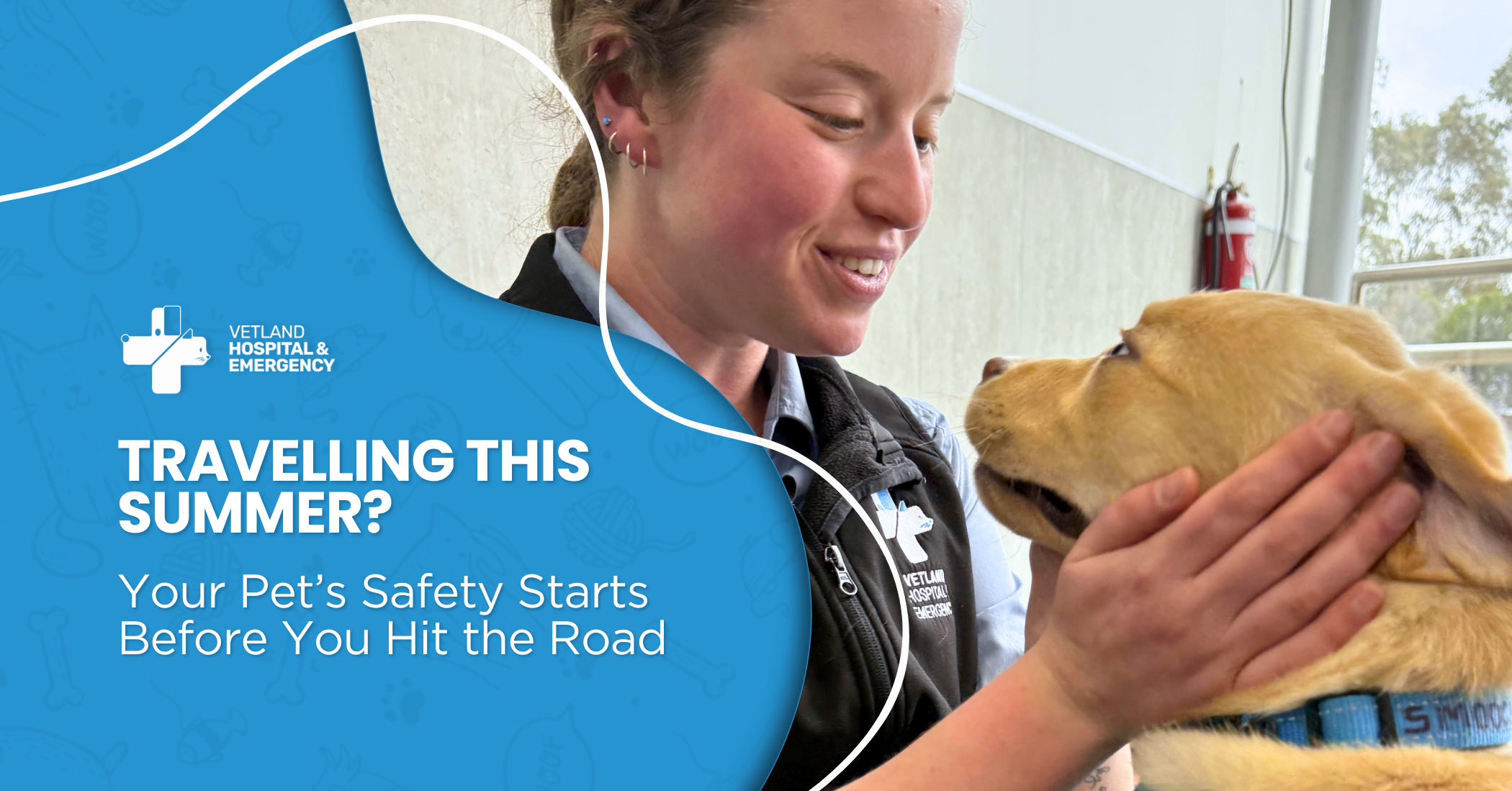Top 4 Essential Tips to Keep Your Bulldog Safe From Heatstroke This Summer
Summer is the season for sunshine, play, and poolside fun. But for bulldogs and other short-nosed breeds, hot weather brings serious risks that quite...
2 min read
![]() VetLand Hospital & Emergency
May 15, 2025 6:31:51 PM
VetLand Hospital & Emergency
May 15, 2025 6:31:51 PM
.png)
Emergencies don’t wait. One minute your pet’s fine—the next, you’re racing to the clinic. It’s scary. But being prepared can change everything.
This guide walks you through five of the most common cases that we see—and how to act fast, stay calm, and give them their best shot.
Straining to urinate is one of the most life-threatening emergencies we see, especially in male cats. A blocked bladder can quickly become fatal.
Watch for:
Don’t wait. Don’t watch. Come straight in. Even if it’s not a complete blockage, it’s not worth the risk. A blocked bladder can be fatal without immediate veterinary care, and there’s no safe at-home remedy.
Upon examination, your veterinarian can often tell quite quickly whether your cat needs emergency attention or whether there is another concern to consider.

Seizures are awful and very distressing to watch your pet go through. Knowing how to respond can make a big difference to your pet’s management, as well as your safety.
Keep your dog away from furniture or stairs during a seizure to prevent injury. If you can, take a video to time the episode and share it with your vet.
If one lasts over three minutes or if your pet has more than one seizure occur in 24 hours, come in immediately.
Seizures can cause body temperatures to spike dangerously high. Use a cold, wet towel on low-fur areas like the belly, groin, or neck. Monitor their temperature with a rectal or aural thermometer.
When your pet recovers from a seizure, they can be disorientated and confused, sometimes even temporarily blind! Assess your pet carefully, and don’t approach or handle them until they are seeking your comfort.
Diarrhoea is one of the most common reasons pets are brought to emergency care. It ranges from mild to life-threatening.
Take photos of stools or vomit to show to your vet. Avoid the home-cooked approach of plain chicken and rice—it lacks fibre. Feed a commercial gastro-supportive diet in 4–6 small meals daily.
Over-the-counter veterinary diarrhoea treatments may be appropriate if symptoms are mild. It’s always best to bring your pet in for an assessment as they are the masters of masking serious health problems.
Broken nails may seem minor, but they are extremely painful and prone to infection.
Inspect your pet’s paw carefully. If bleeding, make your pet stay calm and apply gentle pressure. Use an Elizabethan collar to stop licking.
Your pet should see a veterinarian for treatment from here. Unfortunately, some damaged nails may need professional removal under anaesthesia.
Most often, we see torn nails as an accident during play with nails that have been left a tad bit too long. Avoid this injury by ensuring your pet’s nails are regularly trimmed or filed. Don’t forget the dew claw!
Bee stings can cause sudden, severe allergic reactions.
Stay calm. If you can see a stinger, use a credit card to gently scrape it away—don’t pinch. Stay close and monitor for signs of a serious reaction.
If your pet shows any distress or any of the symptoms above, come to the clinic immediately for treatment.

When your pet’s in trouble, don’t second-guess it.
You know that feeling in your gut? Listen to it. A few minutes can make all the difference.

Summer is the season for sunshine, play, and poolside fun. But for bulldogs and other short-nosed breeds, hot weather brings serious risks that quite...

Summer holidays are nearly here, and I know many of you are preparing for sunshine, beaches, and long-awaited adventures.If your pet is joining you,...
-1.png)
If you’ve ever wondered whether you’re truly doing the right thing for your pet when it comes to vaccinations, you’re not alone.